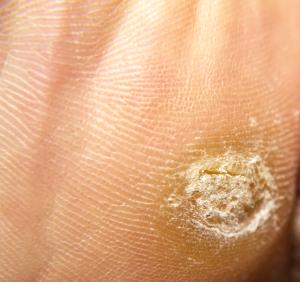Why Do My Calluses and Corns Keep Coming Back?
January 20, 2014
A plantar callus
As a Toronto and surrounding area in-home certified foot care nurse, this is a question I often hear. There are many reasons why corns and calluses keep coming back. First of all, what are corns and calluses?
What are the three types of corns?
Seed corn – often found on the ball or the heel of the foot, it is a small, white plug in the skin. It can be painful.
Hard corn – often found on the top of the toe or on the outside of the little toe. It has a thick, white surface.
Soft corn – found between the toes, most often between the fourth and fifth toes.
What is a callus?
A callus is an area of skin that has been subjected to repeated rubbing or friction. An area of dense, rough skin develops to protect the sensitive skin underneath. A callus on the bottom of the foot is called a plantar callus.
What causes corns and calluses?
- ill-fitting shoes that are either too tight or too loose
- narrow or pointy-toed shoes
- high heels
- structural problems of the foot including hammer toes, bunions, lack of fatty padding on the ball of the foot
How do I stop or at least minimize the occurrence of repeated corns and calluses?
- have shoes properly fitted
- avoid wearing very high heels
- wear mid-high heels that are no more than 2 inches high
- apply moisturizer to affected areas. Use a moisturizer that contains urea since this is especially effective.
- if you have bunions, hammertoes or wide feet, make sure your shoes comfortably accommodate them
- while showering or bathing, use a pumice stone to gently exfoliate dry, rough patches
- have your corns and calluses reduced by a certified foot care nurse who is trained to do so.
A word about diabetes and corns/calluses:
The risk of getting an infection in the foot is higher in a person with diabetes. Poor healing of open sores and wounds in the foot leads to infection and a higher risk of lower limb amputation. For this reason, a person with diabetes is strongly advised to avoid reducing calluses on their own.
